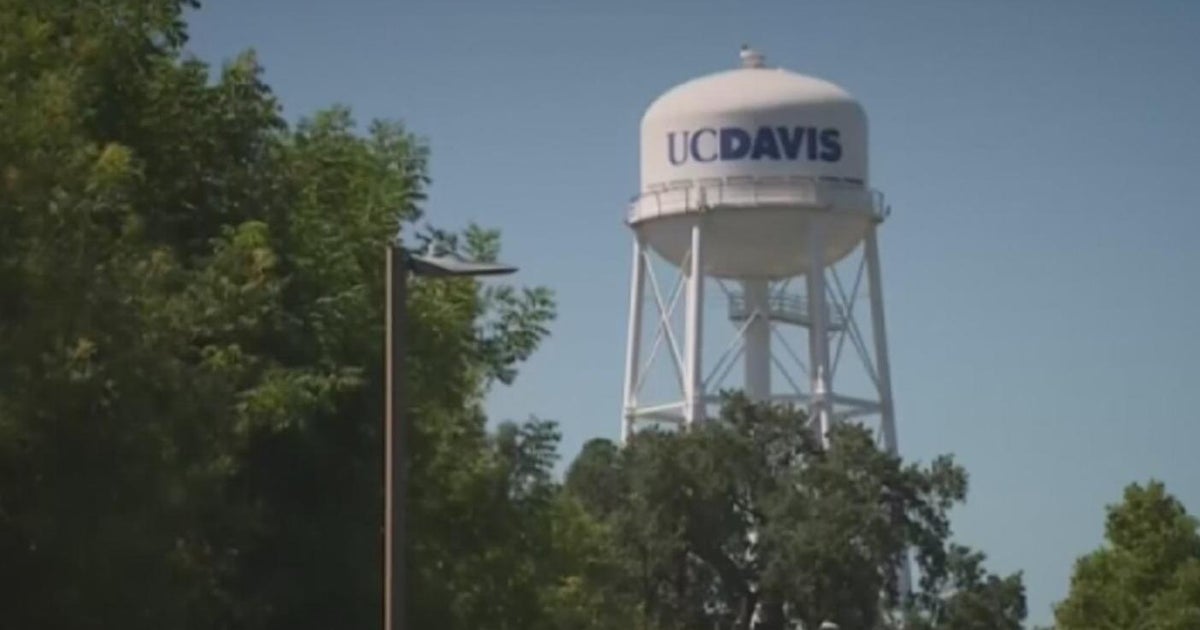Quake Prediction Still Stymies Scientists
LOS ANGELES (AP) -- The East Coast earthquake left more than just residents unaccustomed to feeling the ground shake and sway in a daze. It also surprised some scientists who spend their careers trying to untangle the mysteries of sudden ground shifts.
Despite decades of research, earthquake prediction remains elusive. As much as society would like scientists to tell us when a jolt is coming, mainstream seismologists are generally pessimistic about ever having that ability.
They lived through the checkered history of earthquake prediction, filled with passioned debates, failed oracles and the enduring search for warning signs that may portend a powerful quake. The Earth so far has refused to give up its secrets.
In recent years, however, a more hopeful camp has emerged, pushed by researchers using satellites who say it may be possible to someday predict earthquakes from space and others who think they can tease out signals in rocks. The two schools of thought swapped notes during a two-day meeting in Los Angeles weeks before a relatively mild magnitude-5.8 rattled the Eastern Seaboard.
"I was pretty skeptical going in and I remain skeptical," said Washington state seismologist John Vidale, who was among 44 scientists from around the world who attended the invitation-only meeting.
Geophysicist Malcolm Johnston with the U.S. Geological Survey agreed.
"I've been chasing this for a long time," he said. "If you think you can detect the start of an earthquake, it's going to be very, very difficult."
How earthquakes occur is well known. The Earth's crust is like a giant jigsaw puzzle, broken into several pieces known as tectonic plates that constantly bump and grind or slide past each other. The movement happens slowly, about the speed at which our fingernails grow. Eventually, there's enough pent-up stress and the rocks suddenly slip, releasing tremendous energy that we feel as shaking.
Most earthquakes are small and imperceptible. Occasionally, a powerful one wreaks havoc like the ones that ravaged Haiti last year and coastal Japan in March. No one knows how a small rumble can cascade into a big one.
Spurred in part by a pair of megaquakes in the 1960s, scientists began looking in earnest for signals that will help them distinguish a serious quake from the garden variety. Hopes were high for reading the seismic tea leaves. They scoured for anything and everything that might be a clue: warping in the Earth's crust, radon gas releases along a fault, weird weather and even the behavior of cockroaches, snakes and other animals.
None of the phenomena studied panned out, but the notion that animals might have a "sixth sense" persists to today.
Keepers at the National Zoo in Washington, D.C. reported that lemurs, a gorilla and an orangutan were restless and making noises minutes before the East Coast quake on Aug. 23.. Scientists say animals can sometimes feel the first arriving seismic waves before people do, but this happens after a fault has ruptured. In other words, the earthquake has already begun.
The only prediction the United States made was back in the mid-1980s when government scientists said a strong quake will hit a rural town straddling California's famous San Andreas Fault before 1993 based on how many temblors had occurred there in the past.
Crews buried high-tech instruments in Parkfield, halfway between Los Angeles and San Francisco, in hopes of catching it. The deadline came and went with no significant quiver. A strong quake finally did shake Parkfield -- 10 years later.
USGS geophysicist Michael Blanpied, who considers himself agnostic on whether quakes are predictable, said any sign that might point to a big quake would likely be subtle.
"I remain to be proven wrong on that," Blanpied said.
In the other corner are researchers who are more optimistic about finding earthquake precursors. They tend to work in fields like physics and atmospheric science. The group got together with earthquake researchers at the University of Southern California in late July to start a dialogue.
The campus houses the Southern California Earthquake Center where a worldwide project is underway to test forecast methods. The center sponsored the meeting with NASA, which funds groups looking into earthquake prediction. Participants did not rate the merits of the contested theories, but all agreed that more study was needed.
Physicist Dimitar Ouzounov of Chapman University, who uses satellite data to discern how changes in the atmosphere might have a relation to earthquakes, is well aware of the frustrating history of earthquake prediction. Ouzounov, who is trained in seismology, said the field has reached a roadblock and that other disciplines might be able to help.
NASA researcher Friedemann Freund, who studies electrical signals from rocks being squeezed, admits it's hard to change people's minds.
"This is not going to happen on the spot," he said. "You can inoculate them with new ideas. They always want to keep their skeptical distance and I understand."
While scientists can't pin down when a damaging quake will strike in a narrow time frame, they are able to make long-term forecasts based on a region's seismic history. For example, because of California's shaky past, the USGS has calculated that the state faces an almost certain risk -- a 99.7 percent chance -- of being rocked by a magnitude-6.7 quake or larger by 2038. These long-term odds are as specific as can get.
Despite the slow progress, scientists agree the goal is worth pursuing.
Said the USGS's Johnston: "We have to keep looking just in the off chance that we have missed something."
(Copyright 2011 by The Associated Press. All Rights Reserved.)



